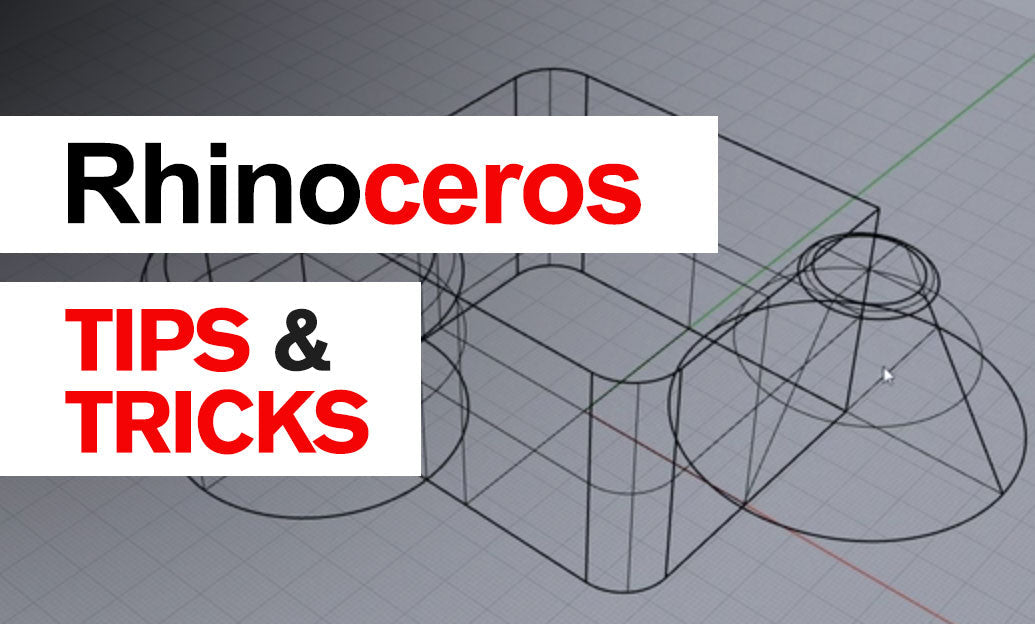Your Cart is Empty
Customer Testimonials
-
"Great customer service. The folks at Novedge were super helpful in navigating a somewhat complicated order including software upgrades and serial numbers in various stages of inactivity. They were friendly and helpful throughout the process.."
Ruben Ruckmark
"Quick & very helpful. We have been using Novedge for years and are very happy with their quick service when we need to make a purchase and excellent support resolving any issues."
Will Woodson
"Scott is the best. He reminds me about subscriptions dates, guides me in the correct direction for updates. He always responds promptly to me. He is literally the reason I continue to work with Novedge and will do so in the future."
Edward Mchugh
"Calvin Lok is “the man”. After my purchase of Sketchup 2021, he called me and provided step-by-step instructions to ease me through difficulties I was having with the setup of my new software."
Mike Borzage
Rhino 3D Tip: EdgeSoftening — Non‑Destructive Visual Edge Rounding for Quick Render Previews
November 12, 2025 2 min read

EdgeSoftening visually rounds sharp edges at display/render time without altering your NURBS topology. It’s perfect for quick presentations, concept reviews, and screenshots when you don’t want to commit to real fillets.
What it is:
- A per-object render mesh modifier that affects viewport shading and renders.
- Non-destructive: your underlying solids and surfaces remain unchanged.
- Fast to iterate: ideal when design intent is evolving and final fillets aren’t locked.
When to use it:
- Concept visualization and client previews.
- Marketing renders where speed matters more than manufacturing accuracy.
- Evaluating aesthetics of fillet proportions before committing to FilletEdge.
How to apply:
- Select one or more closed polysurfaces or meshes.
- Open Properties panel and locate the Edge Softening section (Render Mesh modifiers).
- Enable it and set a Softening Distance (think of it as a “visual radius”).
- Toggle Round vs. Chamfer style if available in your version.
- Use a threshold/angle limit to restrict softening to sharper edges only (helps avoid mushy transitions on gentle blends).
- Preview in Rendered or Raytraced viewport for accurate shading feedback.
Best practices:
- Keep distances realistic. Oversized values can cause shading overlaps or slow viewports.
- Refine the object’s render mesh if needed: per-object custom mesh settings can reduce artifacts on small radii.
- Use EdgeSoftening on duplicated design states: maintain a “clean” version without modifiers for downstream CAD work.
- For assemblies, apply EdgeSoftening to hero parts only to manage performance.
- Combine with improved display modes (Ambient Occlusion or custom Rendered) for subtle, convincing edges without heavy geometry.
What it’s not:
- Not a substitute for engineering fillets. Avoid using it for manufacturing, booleans, or downstream CAD exchange.
- Not guaranteed to carry through all exports. If you must share the softened look, ExtractRenderMesh and export the mesh version (keep the NURBS original).
- Not recommended for Make2D-based documentation where true edge definitions are required.
Troubleshooting tips:
- Shading glitches at tight corners: reduce Softening Distance or increase mesh quality locally.
- Performance drops: disable softening on background parts, or use NamedSelections to toggle modifiers.
- Unexpectedly softened gentle edges: increase the angle threshold so only crisp edges are affected.
Workflow suggestion:
- Early stage: rely on EdgeSoftening for speed.
- Design freeze: replace critical softened visuals with real FilletEdge features for accuracy.
- Delivery: export clean NURBS for fabrication; export softened meshes only for renders or AR/VR viewers.
Need Rhino or add-ons to enhance this workflow? Explore licenses, upgrades, and expert guidance at NOVEDGE, including Rhino and ecosystem tools. For more pro tips and solutions, reach out to the team at NOVEDGE.
You can find all the Rhino products on the NOVEDGE web site at this page.
Also in Design News

Cinema 4D Tip: Bake procedural animation into editable keyframes
November 12, 2025 2 min read
Read More
ZBrush Tip: Polygroups as Smoothing Groups for Creasing, Remeshing, and Export
November 12, 2025 2 min read
Read More
V-Ray Tip: Accelerate lookdev with V-Ray Frame Buffer regions and history
November 12, 2025 2 min read
Read MoreSubscribe
Sign up to get the latest on sales, new releases and more …


